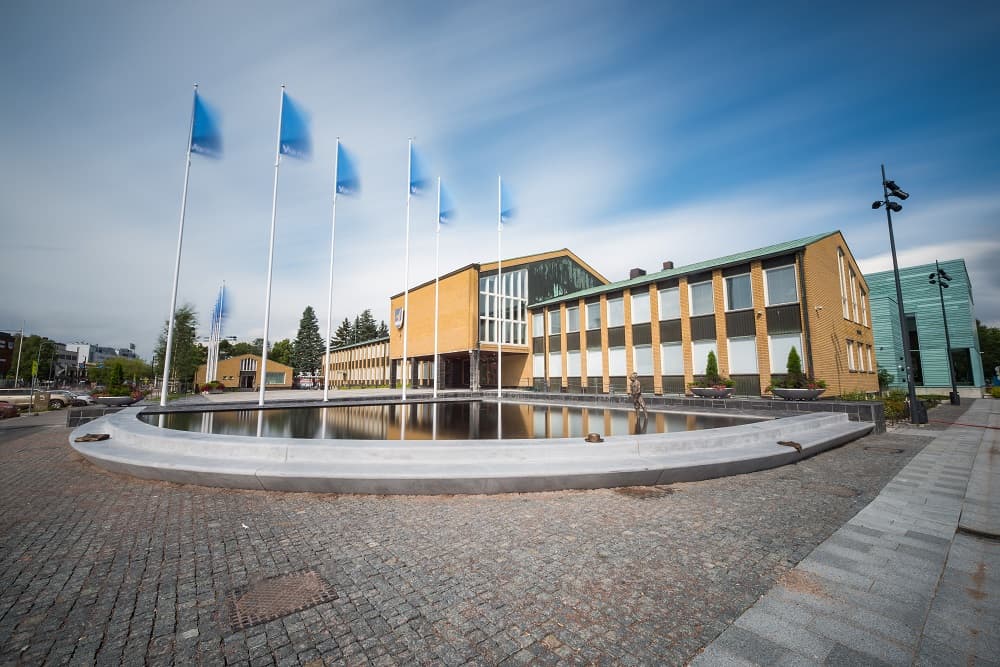Information about Vantaa
Local information
Select your municipality in order to see information about local services when browsing the site.
Traffic
Vantaa and the entire metropolitan area boast good public transport connections. There are several stations along the main railway line and the Martinlaakso line. Many bus routes run through the city.
Vantaa is part of Helsinki Region Transport (Helsingin seudun liikenne HSL), a joint municipal authority that organises public transport in the metropolitan area.
You can use the Journey Planner (Reittiopas) service to search for information on routes in the metropolitan area. The service provides suggestions on how to get from one place to another using public transport.
Helsinki Region Transport (HSL)
Journey PlannerLink redirects to another websitePublic transport in the HSL area
In the Helsinki region, you can travel with an HSL card, the HSL application or contactless payment. Before you buy an HSL card (HSL-kortti), you must register as a permanent resident in one of the cities included in the HSL region. You can purchase an HSL card at an HSL service point in Pasila or at your municipality’s own information point. Please take along your ID card.
With the HSL app, you can buy, for example, single tickets and season tickets. You can buy tickets in the HSL app if you have Finnish online banking credentials. You can use the app to plan itineraries and track reports of traffic incidents. Download the free app from Google Play or AppStore. More information is available on the HRT website.
Helsinki Region Transport (HSL)
Sales point searchLink redirects to another websiteHelsinki Region Transport (HSL)
Information and advice for passengersLink redirects to another websiteWalking and cycling
Vantaa has a lot of passenger and bicycle paths. If you want to travel on foot or by bike, you can find a suitable route in, for example, the Reittiopas service. In Vantaa, there are also city bikes that you can use to travel short distances. More information about city bikes is available on the HSL website.
Motor and air traffic
The international Helsinki-Vantaa Airport is located in Vantaa. The airport has good traffic connections by car, bus and train.
Many metro and railway stations offer free car parks for commuters who wish to continue their journey using public transport. You can easily find bus and train timetables in the Journey Planner.
You can find information about traffic in Finland on the InfoFinland page Traffic in Finland.
Decision-making and public engagement
Decisions regarding Vantaa are made by the City Council (kaupunginvaltuusto). It has 67 members, who represent the different political groups. The Council is elected every four years in a municipal election (kunnallisvaalit).
Residents of Vantaa can affect the making and preparation of decisions in many ways. You can watch councel meetings and find more information on decision-making on the Vantaa channel.
Vantaa has an advisory board for multicultural affairs (monikulttuurisuusasiain neuvottelukunta), which presents motions on matters concerning immigrants. Find out more on the City of Vantaa website.
There are political associations, immigrant associations and other organisations in Vantaa through which you can affect decision-making. More information is available on the Vantaalla.info website.
Religion
There are many religious communities in Vantaa and Helsinki. The Religions in Finland service provides you with the opportunity to search for information according to religious community or municipality.
The Evangelical Lutheran Church has six Finnish and one Swedish parish in Vantaa. Find out more on the website of Vantaa Association of Parishes.
An Orthodox church is located in Tikkurila. More information on the activities of the Orthodox parish in Vantaa is available on the website of the Orthodox parish of Helsinki.
Read more: Cultures and religions in Finland
Parish Union of Vantaa
Evangelical Lutheran parishesLink redirects to another websiteOrthodox Parish of Helsinki
Orthodox parishLink redirects to another websiteBasic information
Vantaa is one of the four municipalities in the Helsinki Metropolitan Area. It is located next to Espoo and Helsinki. The centre of Vantaa is Tikkurila. Vantaa also covers many other large urban areas, such as Korso, Koivukylä-Havukoski, Myyrmäki, Martinlaakso, Hakunila, Länsimäki and Pakkala.
Vantaa has about 250,000 inhabitants. Approximately 2.2% of them speak Swedish as a native language. About 27% of them speak a language other than Finnish or Swedish as their native language. More than 120 native languages are spoken in Vantaa. Vantaa covers an area of approximately 240 km2, of which 2 km2 is water.
History
The Vantaa region has been inhabited for a very long time. Remnants of habitation have been found that date back as far as 7,000 years. The current Vantaa came into being in the area of the former Helsinge Parish. Its history extends all the way to the 14th century. The Helsinge Parish initially became the Rural Municipality of Helsinki, then the Borough of Vantaa in 1972 and finally the City of Vantaa in 1974. Vantaa’s position as a neighbour to Helsinki, the capital of Finland, has been an important factor in terms of its development. Important routes, such as the road from Turku to Vyborg through Helsinki and later the railway north from Helsinki, have run through Vantaa. Industry and residential areas have sprung up around the roads and railways. Vantaa is still an important traffic hub. For example, Helsinki-Vantaa Airport is located in Vantaa.
